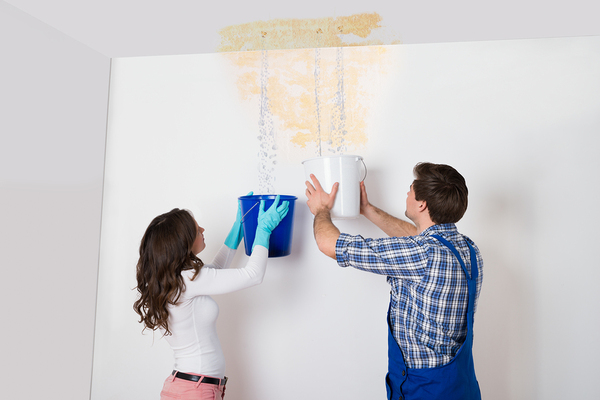The Residential Principal Frequent Triggers of Leakage: Detailed Examination
The Residential Principal Frequent Triggers of Leakage: Detailed Examination
Blog Article
They are making a few great annotation about How Fast Water Damage Can Ruin Your Home in general in this great article in the next paragraphs.

Leaks not only cause waste of water but can additionally create unneeded damages to your house as well as promote undesirable natural growth. Unfortunately, water leakages may go undetected given that most of the pipework in our home is concealed. By understanding and also looking for day-to-day scenarios that create leaks, you can protect your residence from future leaks and unneeded damage. Today, we will certainly consider 6 leak creates that may be causing your pipelines to leak.
Intruding roots
Most water leakages begin outside your house as opposed to inside it. If you notice an unexpected decrease in water pressure, say in your tap, require time to head out and examine your backyard. You might discover wet patches or sinkholes in your lawn, and that could indicate that tree roots are attacking water lines triggering water to permeate out. You can have your plumber check for intrusion, specifically if you have trees or bushes near your building.
Corroded water supply
This might be the cause of discoloration or bending on your water pipes. If our plumbing system is old, consider changing the pipelines considering that they are at a greater danger of deterioration than the more recent versions.
Malfunctioning Pipe Joints
The factor at which your pipes attach is often the weakest web link in the waterline. Pipe joints can wear away gradually, resulting in water leaks. The bulk of pipe joints are not conveniently visible. If you have loud pipelines that make ticking or banging sounds, especially when the warm water is activated, your pipeline joints are probably under a lot of pressure. It is advisable to have your plumber inspect your system once a year.
Instant temperature level changes.
Extreme temperature level adjustments in our pipes can create them to expand and also acquire suddenly. This growth and also contraction may create fractures in the pipes, particularly if the temperature are listed below cold.
Poor Water Connectors
Sometimes, a leak can be brought on by loose pipes and pipes that supply your appliances. Most of the time, changing is what causes the loosened water Links. You might locate in the case of a washing equipment, a hose may spring a leak due to trembling during the spin cycle. In case of a water connections leakage, you might see water running directly from the supply line or puddles around your devices.
Blocked Drains
Blocked drains might be aggravating as well as inconveniencing, yet they can in some cases end up triggering an overflow bring about rupture pipelines. Keep eliminating any products that might drop your drains that could obstruct them to prevent such hassles.
All the above are root causes of leaks however not all water leakages arise from plumbing leakages; some leakages might come from roofing leaks. All leaks need to be fixed promptly to prevent water damage.
Leaks not just trigger waste of water but can also create unnecessary damages to your home and advertise unwanted natural growth. By comprehending and looking for everyday circumstances that trigger leakages, you can secure your home from future leaks and also unnecessary damages. Today, we will certainly look at 6 leakage creates that might be causing your pipelines to trickle.
At times, a leakage can be created by loose pipes and also pipelines that provide your home appliances. In case of a water connections leak, you may discover water running straight from the supply line or puddles around your home appliances.
How To Check For Water Leak In Your Home
How To Check for Leaks
The average household's leaks can account for nearly 10,000 gallons of water wasted every year and ten percent of homes have leaks that waste 90 gallons or more per day. Common types of leaks found in the home are worn toilet flappers, dripping faucets, and other leaking valves. These types of leaks are often easy to fix, requiring only a few tools and hardware that can pay for themselves in water savings. Fixing easily corrected household water leaks can save homeowners about 10 percent on their water bills.
To check for leaks in your home, you first need to determine whether you're wasting water and then identify the source of the leak. Here are some tips for finding leaks:
Take a look at your water usage during a colder month, such as January or February. If a family of four exceeds 12,000 gallons per month, there are serious leaks.
Check your water meter before and after a two-hour period when no water is being used. If the meter changes at all, you probably have a leak.
Identify toilet leaks by placing a drop of food coloring in the toilet tank. If any color shows up in the bowl after 10 minutes, you have a leak. (Be sure to flush immediately after the experiment to avoid staining the tank.)
Examine faucet gaskets and pipe fittings for any water on the outside of the pipe to check for surface leaks.
Undetected water leaks can happen without the home or business owner even realizing. If you suspect a water leak, but not able to find the source. It is time to contact a professional water leak detection service, The Leak Doctor.
How To Find a Water Leak In Your Home
https://www.leakdoctor.com/blog/How-To-Check-For-Water-Leak-In-Your-Home_AE197.html

We were introduced to that report on How to detect water leaks in your home from a good friend on our other blog. Liked our write up? Please share it. Help someone else locate it. Thanks a bunch for your time. Kindly check up our site back soon.
Service excellence here. Report this page